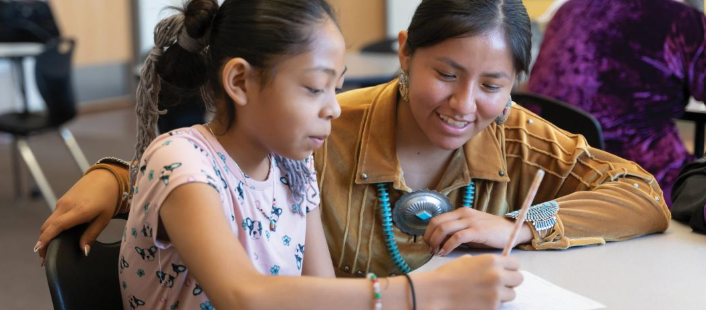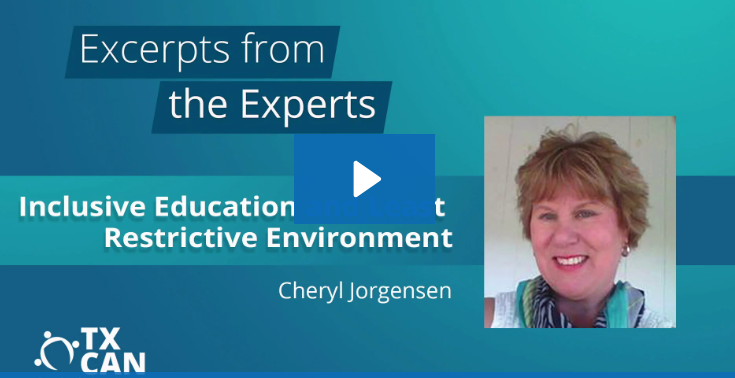Domain IV—Professional Collaboration, Learning, and Responsibilities
Competency 8: Apply knowledge of strategies, approaches, and techniques for effective consultation and collaboration with students, parents/guardians, school personnel, and other professionals to support students' development and learning.
TEA. "Collaboration and Flexible Grouping Educator Collection"
Collaboration and Flexible Grouping Educator Collection courses offer multiple learning opportunities focused on strengthening partnerships to enhance collaboration, co-teaching best practices, effective data-driven decision-making, and student-centered small group planning and implementation.
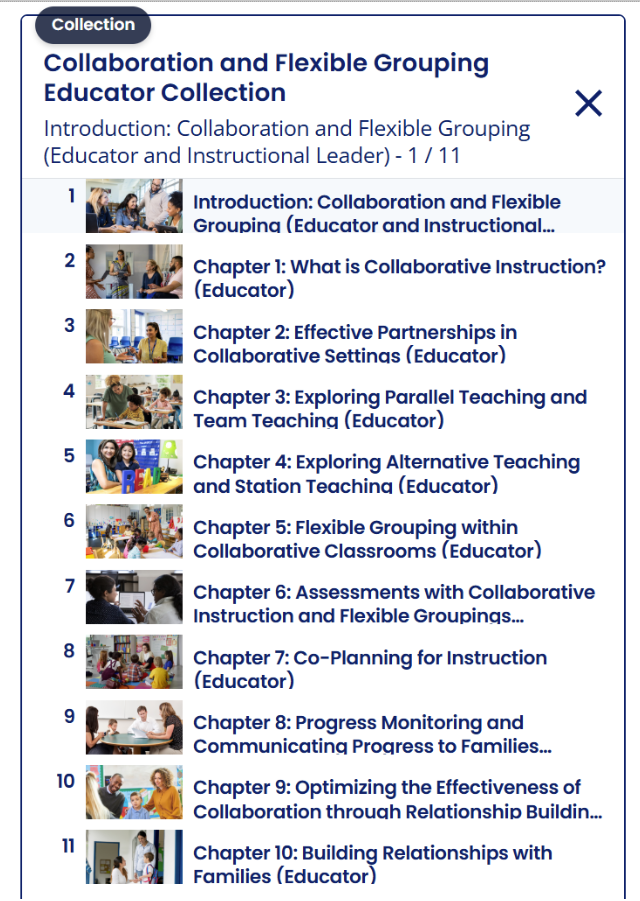
TEA, "Working With Paraprofessionals State Guidance Document and Field User Guide"
This state guidance document assists educators in taking full advantage of having a paraprofessional in their classroom. The information addresses both general and special education settings, including educator/ paraprofessional roles and responsibilities.
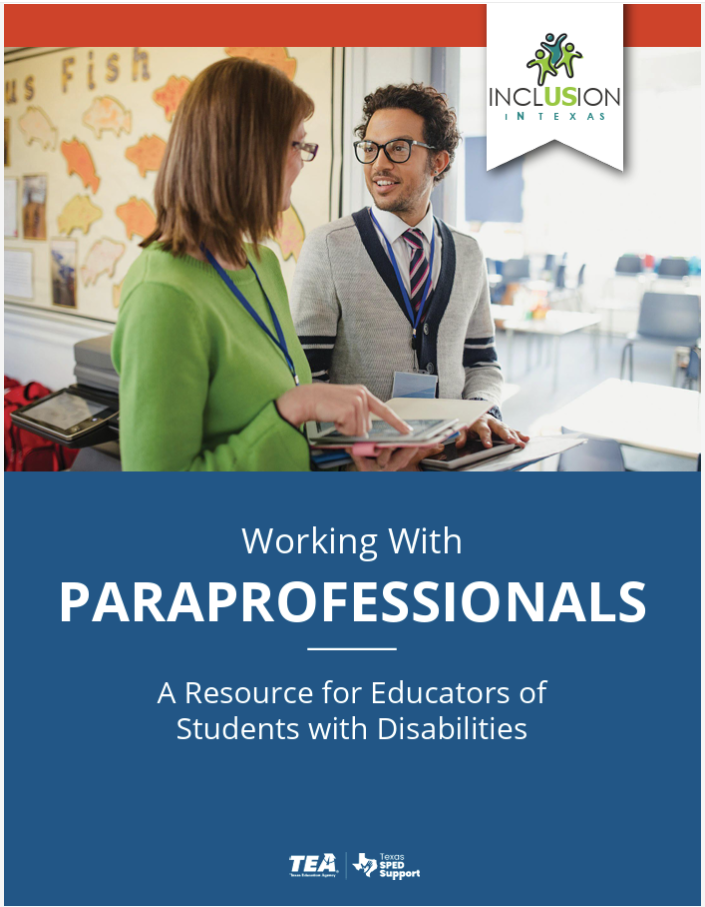
TEA, "Working with Paraprofessionals"
This video provides educators with the essential strategies for successful collaboration with paraprofessionals in the classroom. Additional insights will be provided to clarify roles and responsibilities, consistent communication, and the need for continuous professional development.
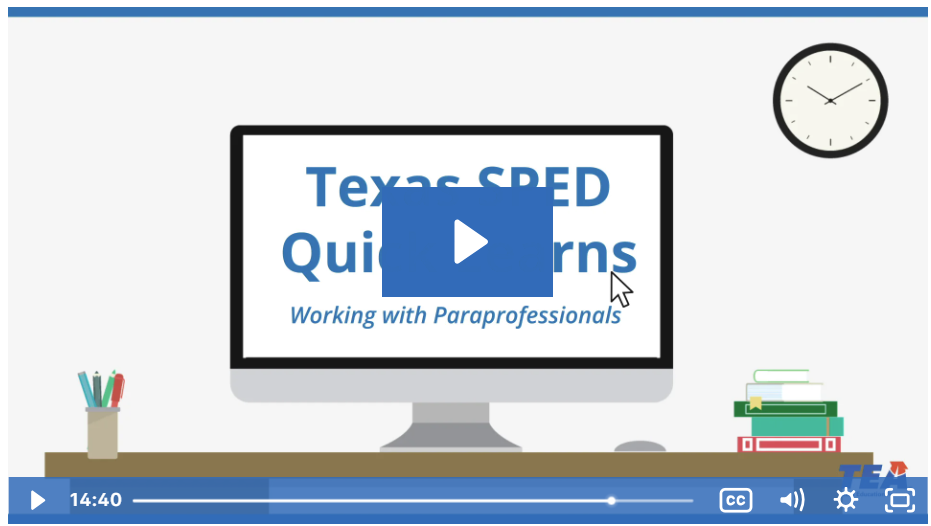
Collaborative Instruction Collection
The Collaborative Instruction Collection provides tools and guidance for implementing co-teaching, flexible grouping, and effective educator partnerships to support inclusive instruction for all learners.

Chapter 4: Master Scheduling for Co-Teaching and Collaborative Instruction (Instructional Leader)
In this course, instructional leaders will explore best practices for building a campus master schedule that prioritizes collaborative instruction. They will learn how to utilize a team approach, include special education representatives in the planning process, and consider individual student needs when balancing class compositions.

Guidelines for Co-teaching in Texas: Teachers
Co-teaching is intensive specially designed instruction embedded within full access to grade-level, rigorous general curriculum leading to a reduced achievement gap. The purpose of this document is to help general education and special education teachers establish a common understanding of co-teaching fundamentals, from conceptualization to implementation, and to explain essential components of effective co-teaching programs.
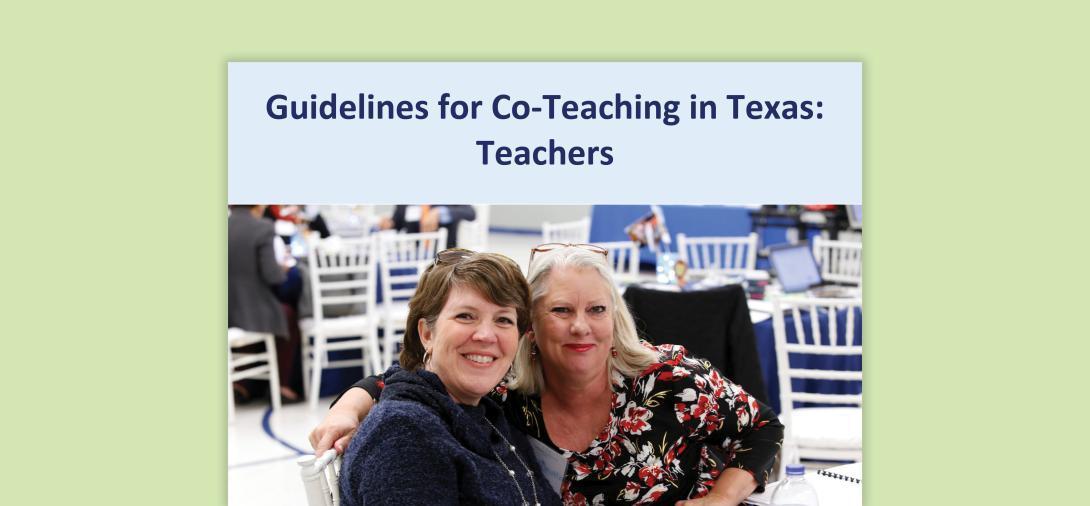
Texas SPED Quick Learns - Co-Teaching
This video provides the fundamentals of co-teaching where two certified professionals share the responsibility of planning, delivering instruction, and progress monitoring for all students within an inclusive model. Educators will understand the core principles of successful co-teaching programs from conceptualization to implementation.
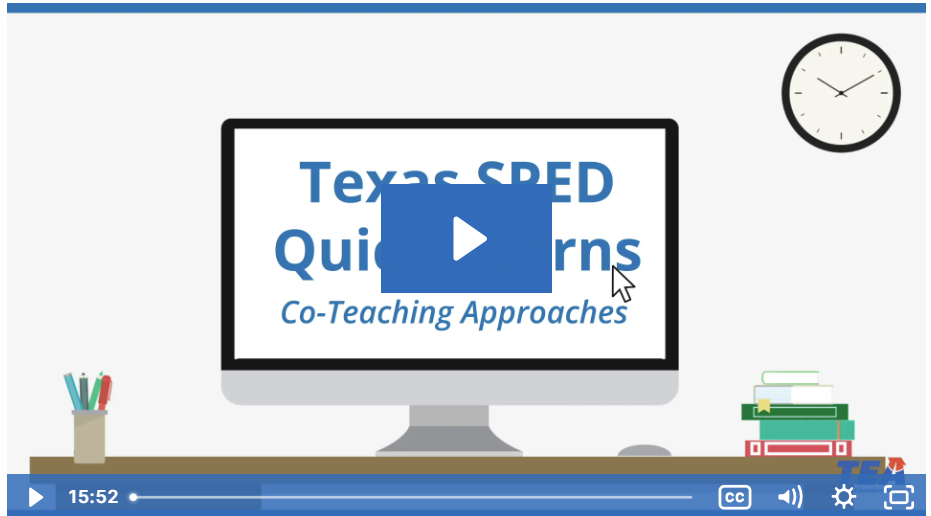
TEA, "Chapter 6: Assessments with Collaborative Instruction and Flexible Groupings (Educator)"
In this course, educators will explore how routine assessment is used to develop data-driven instruction and how collaborative instruction and flexible grouping strategies can promote regular assessment and progress monitoring. Educators will learn actionable steps to effectively implement assessments in collaborative settings.

TEA ”Promote Communication and Collaborative Relationships”: Texas SPED Support
This article discusses key elements in successful communication and collaborations, including building strong communication, collaborative relationships, classroom visits, and professional development for staff.

Family Engagement Framework: A Resource for School Administrators
The Family Engagement Framework outlines six key elements of family engagement derived from the Texas Education Agency’s Review and Support Self-Assessment Tool and the Effective Schools Framework. For each of the six elements, activities and resources are presented that serve as points of reference for school administrators when school teams plan, implement, and evaluate family engagement practices that directly impact outcomes for students with disabilities.
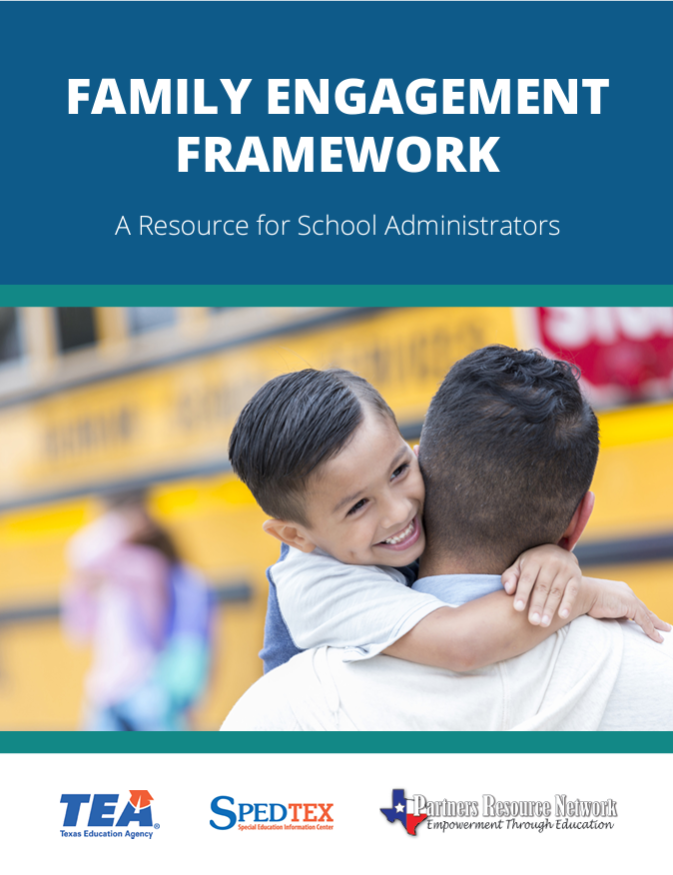
U.S. Department of Education, The Center for Appropriate Dispute Resolution in Special Education, "Playing Nicely Together: Family-centered Practices to Help Practitioners and Families Work Together"
This webinar focused on the fundamentals of creating supportive and effective family-practitioner relationships. The group of presenters, representing family, practitioner, and technical assistance perspectives, shared some of the building blocks of relationships, family-centered practices, and examples of exemplary family-practitioner collaboration.
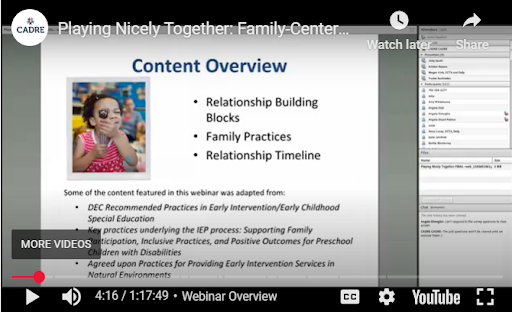
TEA,ARD Committee Manager QuickGuide
Provides an overview of the key roles and responsibilities of an ARD committee manager.
TEA, ESC 18, The Legal Framework
Outlines resources by title under the framework of federal, parent, state, and technical assistance categories. Additionally outlines all state and federal laws in an easy-to-access format with a glossary and search feature.
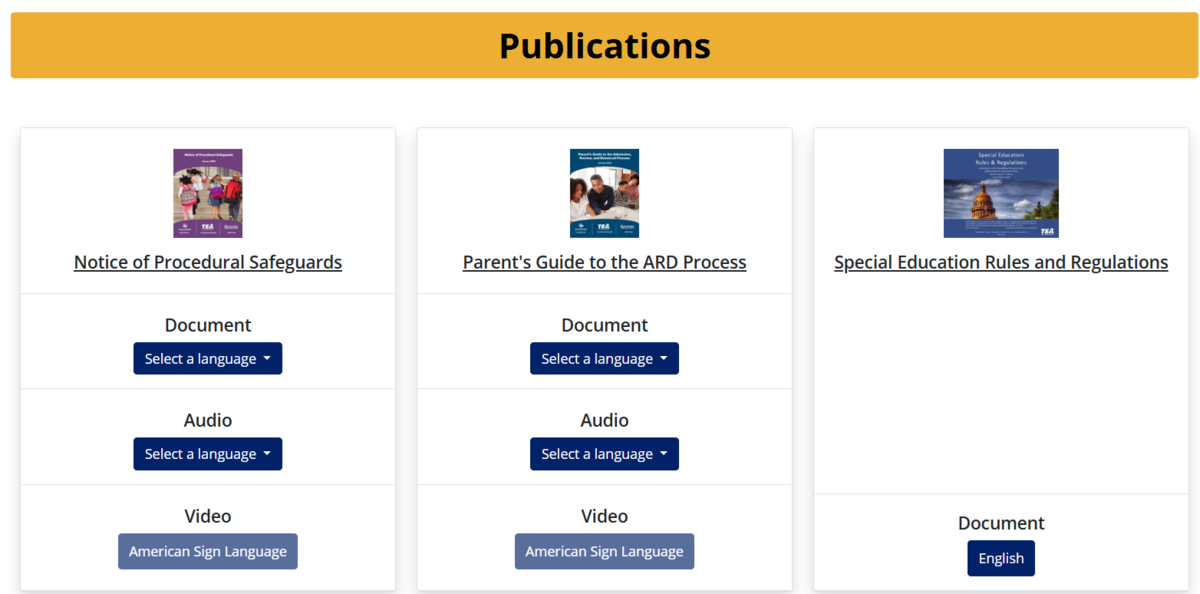
TEA, Support for Paraprofessionals
This resource collection equips paraprofessionals with essential knowledge, including job responsibilities, understanding disabilities, and strategies for instruction, communication, and behavior management, ensuring they can effectively support students' academic, social, and behavioral needs.
TEA, Inclusive Education and Least Restrictive Environment and How They Differ
In this video, Cheryl Jorgensen, an expert on inclusion for students with the most complex access needs, discusses how inclusive education differs from the least restrictive environment.
TEA, Pre-Employment Transition Services (Pre-ETS)
Pre-ETS are services and activities provided by vocational rehabilitation (VR) to help students with disabilities prepare for postsecondary education and employment.
TEA, Career and Technical Education (CTE) and Special Education: Frequently Asked Questions
This document addresses common questions received by the Texas Education Agency (TEA) relating to CTE and students served by special education. All students should have equitable access to CTE courses, with supports as specified in the IEP.
TEA, Alignment to State Standards: Involving Young Students in the IEP Process
In this video, Ayo Jones discusses ways to involve young students in the IEP process.

TxP2P connects parents of children with disabilities, chronic illness, and/or special health care needs so they can support one another. They provide a variety of support groups, education and training opportunities across the state where peers can discuss the new responsibilities and emotions that families face in caring for a child with special health care needs.
The Arc advocates for the rights and autonomy of Texans with intellectual and developmental disabilities. Through education about state services and laws impacting Texans with disabilities, they fight to effect positive policy change and ensure that people with IDDs are included in their communities and have a voice in policies affecting their lives.
Disability Rights of Texas provides direct legal assistance to people with disabilities whose rights are threatened or violated. DRT attorneys and advocates help individuals understand and exercise their rights under the law as well as educate policymakers about issues that impact the rights and services for people with disabilities.
NAMI Texas advocates for the acceptance and treatment of individuals with mental illness to facilitate recovery. They provide statewide support and educational opportunities for individuals living with mental illness, family, friends, professionals, and the community at large to address mental health issues and stigmas.
Partners Resource Network operates the statewide network of Parent Training and Information Centers (PTI), which support parents of children with disabilities. PRN works with parents to help them understand their child’s disability and their rights and responsibilities for education, and obtain and evaluate resources and services for their children.
Easterseals supports children and adults with disabilities and their families through hundreds of home and community-based services. Their early childhood intervention program and outpatient rehabilitation facility give children and adolescents with disabilities and their caregivers the services and support necessary to participate fully in life.
The Autism Society of Texas changes lives by connecting families and individuals to community resources and support throughout Texas. Offerings include support meetings, online networking opportunities, sensory-friendly films, and fun family activities.
TEA, SPEDTex: Special Education Information Center for Parents and Families
SPEDTex is a website dedicated to providing families and educators with high-quality resources to enable students with disabilities to achieve the highest outcomes. This site is a wealth of resources in supporting families.
Competency 9: Apply knowledge of the professional roles and responsibilities of the early childhood–grade 12 special education teacher.
TEA, Early Childhood Intervention
Early Childhood Intervention (ECI) is a statewide program in the Texas Health and Human Services Commission that serves both children and their families from birth up to age 3. Children with developmental disabilities, delays or medical diagnoses may be eligible for ECI services.
A Parent's Guide to Early Childhood Intervention and Early Childhood Special Education
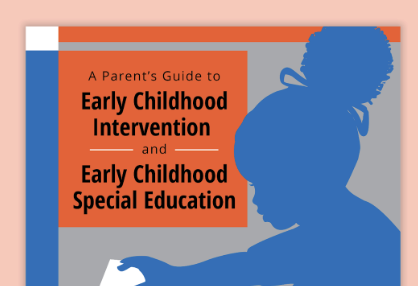
TEA, Instructional Leadership Tool: ECSE
The considerations and discussion points provided are intended to help administrators guide their own thinking, teacher thinking, and purposeful conversations. This tool is designed to align with Domains 1-3 of the T-TESS evaluation system. It is recommended for use in any stage of the T-TESS process, especially during the Pre-Evaluation Conference and Post-Evaluation Conference meetings.
TEA, Developing Social and Behavioral Expectations
This is the fourth course in a series of 12, 30-minute online courses. After completing Tip 4: Developing Social and Behavioral Expectations, the participant will be able to discuss: The Hidden Curriculum, which entails how to behave in a new social setting, Antecedent supports, Consequence supports Video modeling.

In this video, Ayo Jones discusses the importance of a robust vocabulary set.
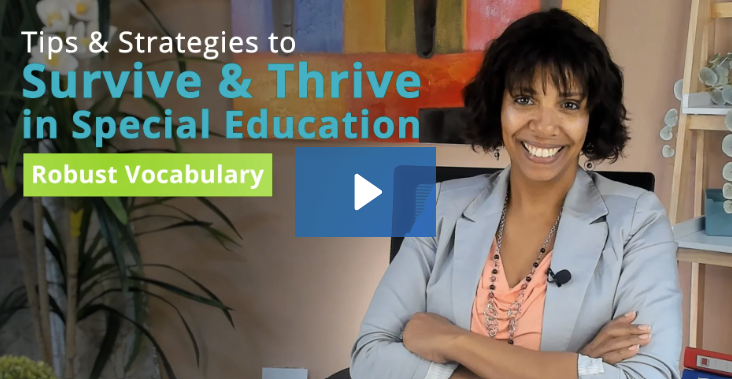
Dually Identified Technical Assistance Guide
Dually identified students require instructional services that address language proficiency levels, considerations for second language acquisition, and specially designed instruction to meet the needs of each individual student based on his or her disability. There are a variety of ways in which these students are served. To serve dually identified students, educators, leaders, and support personnel must effectively collaborate to ensure each dually identified student has the appropriate supports.
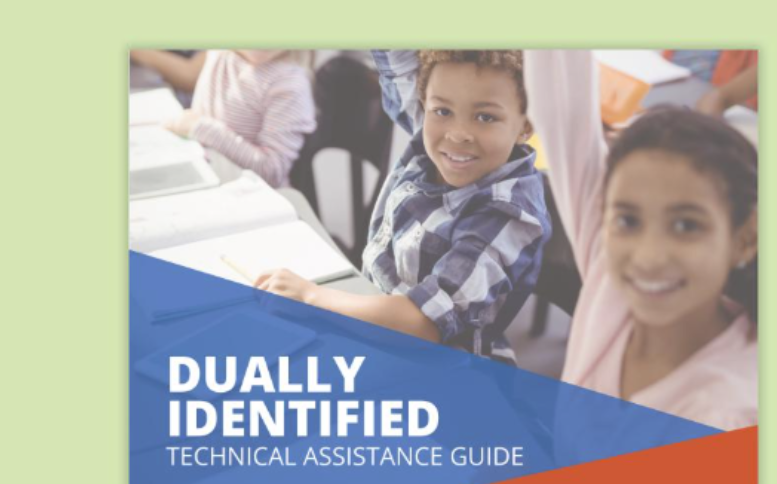
This toolkit covers the following areas in regards to students who are English Language Learners: referral, identification, assessment, and service delivery to ELs with disabilities. considering the influence of language differences and disability on learning behaviors, developing an IEP for an English Learner with a disability (including a checklist of considerations), how to use data from the Office of Civil Rights' Civil Rights Data Collection (CRDC), and selecting appropriate accommodations for students with disabilities.
In this video, an educator reviews the methods he uses to gather information from families.
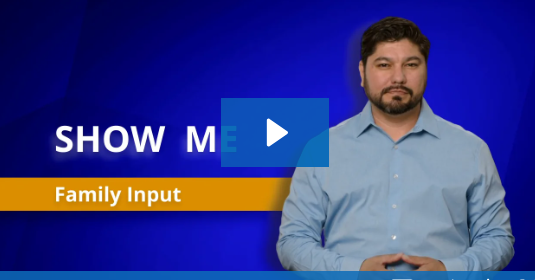
Data Collection Guidance for Secondary Transition
This resource was updated in November 2025 to clarify age ranges for SPPI 13 data and the ARD committee manager role in ensuring the IEP meets compliance with special education requirements, including secondary transition.
What does a good transition plan entail? Dr. Carter explains.
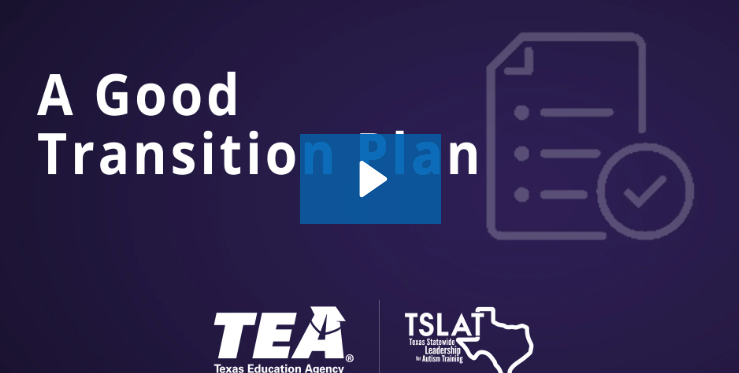
Communication Considerations for Transition
This is the ninth course in the Language and Communication Focused IEPs 11-part series. This course offers information and resources for professionals and guardians supporting a student who is deaf or hard of hearing preparing to go to college with special considerations to communication needs unique to this population.
Parent Literacy Brochure for Students with Visual Impairments- Objects
The literacy brochures were developed by the Texas Sensory Support Network to support the conversation around literacy media with parents. They are intended to be a supplement to the Benefits of Braille,(PDF) developed by the Texas Action Committee for the Education of Students with Visual Impairments.
